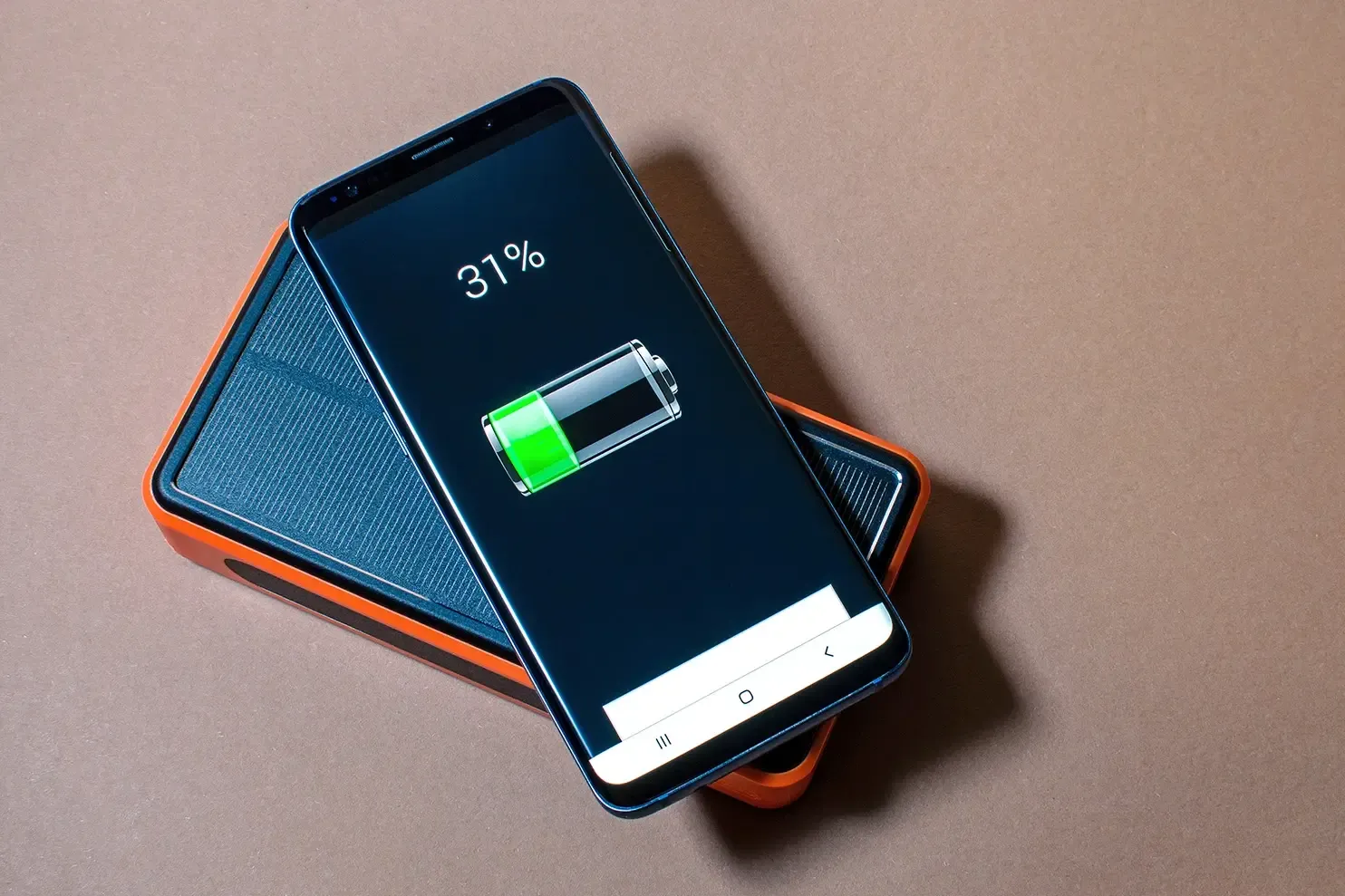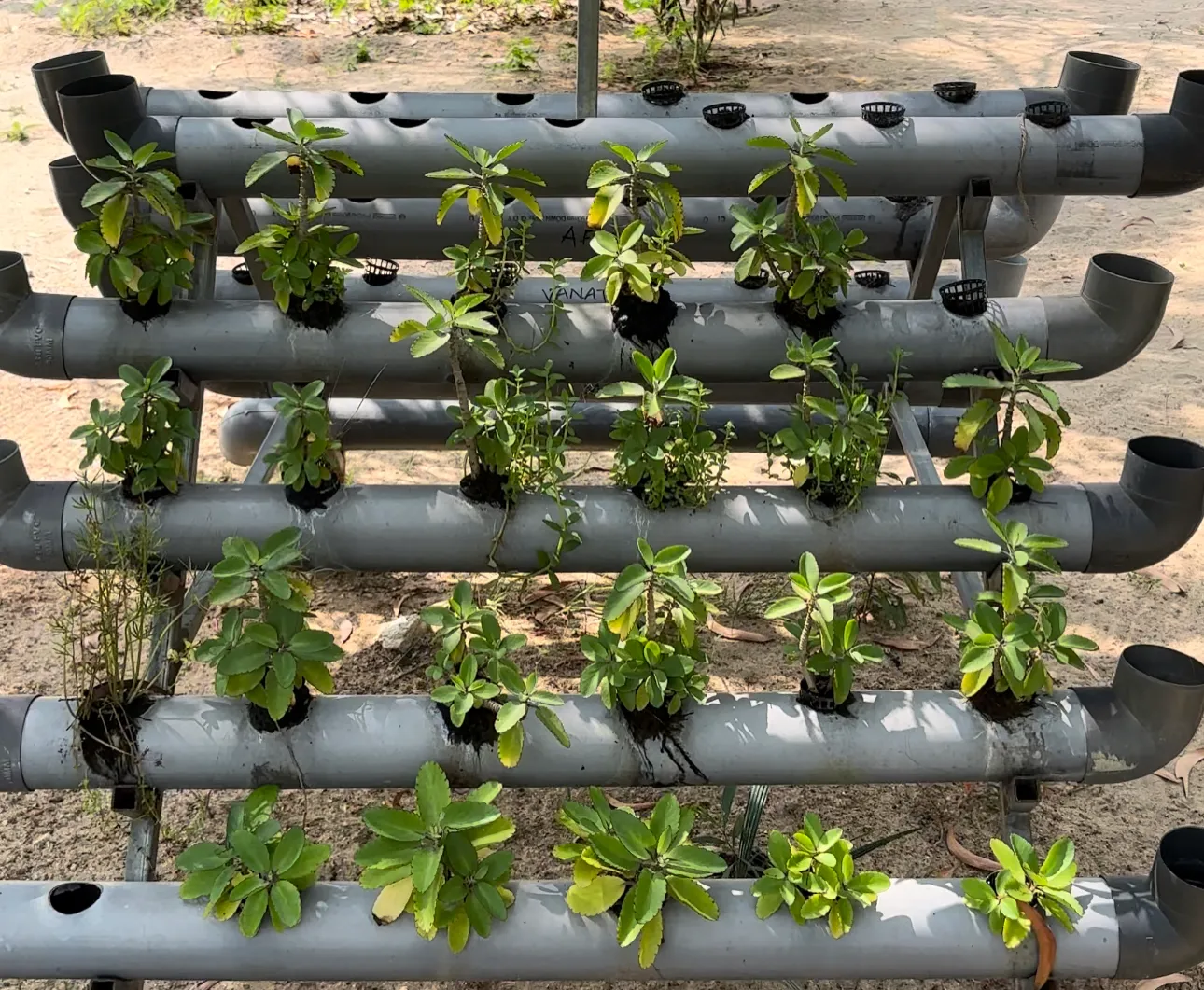Solar Powerbanks - an environmentally friendly alternative?
Solar powerbanks are a useful alternative to conventional powerbanks. They are especially suitable for people who travel a lot and frequently use electronic devices. But how exactly do they work and what are the advantages and disadvantages?
Chapters
What exactly are powerbanks?
A powerbank is a portable device used to charge electronic devices such as smartphones, tablets, and laptops on the go. They are also referred to as portable chargers or external batteries. A powerbank is therefore comparable to a bank where money can be deposited, stored and withdrawn when needed.
Powerbanks have a built-in battery that is charged via a charger plugged into a wall outlet or via a solar panel. Once the powerbank is charged, it can be used to charge other devices via USB cable. Most powerbanks have multiple USB ports, so you can charge multiple devices at once.
Powerbanks are especially useful for people who travel a lot and don't have access to a power outlet. They are also useful in emergencies like if for example the power were to go out and you need to charge your phone or other important devices.
There are different types of powerbanks that vary in size, capacity and material. Some are very small and light, while others are larger and heavier. Some are made of plastic, while others are made of aluminum or other sturdy materials. The capacity of a powerbank is measured in mAh (milliampere hours) and indicates how much power the battery can store. The higher the capacity, the more devices can be charged.
The 2 different powerbank types
There are 2 different types of portable powerbank chargers you can buy:
Universal or standard power banks
They can be charged with a USB charger when power is available, and then used to charge battery-powered devices such as cell phones and a variety of other devices that normally use a USB charger. Universal or standard powerbanks are the "normal" and most portable powerbank chargers available in mainstream stores and online. They are charged using normal USB chargers.
Solar-Powerbanks
A solar powerbank is a powerbank with solar panel, which draws energy from the sun. So the main feature of the solar powerbank is that as long as the sun is shining, even just a little, it continuously draws power. The electricity stored during daylight hours is then saved for later use. Some solar chargers allow you to charge the powerbank both by solar panel and with normal electricity by cable. They are usually portable enough to take with you when needed, but some are large and therefore need to be placed in a specific location. Solar powerbanks come in different capacities (usually between 1,000 and 50,000 mAh) and in different designs to suit individual preferences.
How does a solar powered powerbank work?
A solar-powered powerbank works much like a traditional powerbank, but instead of being charged via a charger plugged into a wall outlet, it uses solar panels to capture energy from the sun and store it in a battery.
Solar panels are photovoltaic cells that convert light energy into electrical energy. They are attached to the surface of the solar power bank and absorb sunlight, producing electricity. This electricity is then sent through a controller to the battery, where it is stored.
When you plug an electronic device into the powerbank, the stored electricity is transferred from the battery to the device and charged. Most solar powerbanks also have a built-in battery that can be used to charge the device when there is no sunlight.
It is important to note that solar powerbanks tend to charge slower than traditional powerbanks that plug into a wall outlet. This is because solar panels cannot produce as much power as an electrical outlet. It is therefore advisable to charge a solar powerbank over a longer period of time rather than trying to charge it quickly.
The advantages of a solar powerbank
1. Environmentally friendly
One of the biggest advantages of solar powerbanks is that the power generation is environmentally friendly. Unlike fossil fuels, which produce exhaust fumes and cause air pollution when generating electricity, solar powerbanks use the sun's unlimited energy source to produce electricity. Conversely, this means that they produce no exhaust gases and cause no air pollution. So by using solar powerbanks, you can help reduce pollution and improve air quality. They are a good choice for people who are conscious about the environment and their ecological footprint. However, it is important to note that the manufacturing of solar powerbanks also causes some environmental impact as they require various materials and resources. One should therefore make sure to buy a solar powerbank from a reputable manufacturer that uses environmentally friendly production methods.
2. Independence from power outlets
Normally, charging devices such as your cell phone during a long trip can be a challenge, especially if you can't find a power outlet nearby. However, with the advent of powerbanks in the market, charging while traveling is hassle-free. Most solar chargers, just like standard powerbanks, are portable, meaning you can simply slip them into your pocket and take them with you wherever you go. There are even models that are as light and slim as your cell phone, so you can conveniently take them on any adventure. Solar power banks can be used anywhere there is enough sunlight, making them an ideal choice for longer trips or emergencies.
3. Multiple use
Another advantage of solar power banks is that they can be used in several ways. Not only can they be used to charge electronic devices such as smartphones, tablets and laptops, but they can also be used as an emergency light or even an SOS signal in case of emergencies. Some solar power banks have built-in LED lights that can be used to provide light when a power outlet is not available. This makes them particularly suitable for camping trips or other outdoor activities. Some solar powerbanks also have SOS signaling features that can be used to call for help if you find yourself in an emergency situation. These features are especially useful for people who travel a lot or are in remote areas. Overall, solar powerbanks offer versatile uses and are not just limited to charging electronic devices.
4. Cost savings
n the long run, solar power banks can help save money. Since they have solar panels that absorb energy from the sun, they don't need to be charged at a power outlet, saving on electricity costs. In addition, solar powerbanks can also help save money on batteries. If you often use electronic devices on the go, you may need to buy batteries frequently to charge them. However, with a solar powered powerbank, one can charge the devices directly and no longer need to buy batteries. However, it is important to note that solar powerbanks are usually more expensive than traditional powerbanks. One should therefore weigh whether the cost savings over time will offset the additional cost of purchasing a solar powerbank. After all, the powerbank has to be used regularly over a long period of time to be financially justified.
The disadvantages of a solar powerbank
1. Slow charging
The biggest disadvantage of solar powerbanks is that they are usually much slower at charging devices than traditional powerbanks that plug into an outlet. This is because solar panels can't produce as much power as an outlet and the solar area is usually very small. So when you use a solar powerbank to charge a device, it will take much longer than if you use a traditional powerbank. It is therefore advisable to charge the solar powerbank over a longer period of time rather than trying to charge it quickly.
2. High price
Solar powerbanks are usually more expensive than conventional powerbanks. This is because they have more components, including solar panels and regulators that convert the power from the solar panels to the battery. These additional components increase the cost of manufacturing and make them more expensive than traditional powerbanks. So if you decide to buy a solar powerbank, you should expect to pay more than you would for a conventional powerbank.
3. Dependency on Sunlight
Another disadvantage is that they are dependent on the availability of sunlight. For example, if it is cloudy or there is little sunlight, the solar powerbank will charge slower or not charge at all. This can be a problem especially in areas with little sunlight or during bad weather. It is therefore important to consider the availability of sunlight when using a solar powerbank to ensure that you always have access to power when you need it.
4. Lower capacity
Solar powerbanks usually have a lower capacity than conventional powerbanks that are plugged into a power outlet. This means that they can charge fewer devices before they need to be recharged themselves.
5. Reduced service life
Another downside of solar powerbanks is that they usually have a shorter lifespan than conventional powerbanks that are plugged into a wall outlet. This is because solar powerbanks have more components that can wear out over time, such as solar panels and controllers. So when you buy a solar powerbank, you should expect that it may need to be replaced sooner than a traditional powerbank. This is especially a problem if you use the powerbank frequently and therefore it wears out faster.
Tips: Here's what you should look for when buying
When deciding to purchase a solar powerbank, there are a few crucial factors to consider to ensure you get the best product for your needs:
Capacity: It is important to buy a solar powerbank with the right capacity so that it can store enough power to charge all the devices you need. One should therefore consider the capacity of the powerbank in mAh (milliampere hours) to determine how much power it can provide.
Solar modules and controllers: Solar modules and controllers are an essential part of solar power banks, as they collect energy from the sun and convert it into electricity. The modules consist of photovoltaic cells that convert light energy into electrical energy. The controller ensures that the electricity from the solar panels is properly converted into the battery of the powerbank. It is important that the solar modules and the controller are of good quality to ensure that they can absorb as much energy from the sun as possible.
Battery: The battery stores the electricity and gives it to the electronic devices that are charged. It is important that the battery lasts long and can store a lot of power. It is also important to note that the battery life depends on the frequency of use and storage. For example, using the powerbank frequently or storing it in very hot or cold temperatures can shorten the battery life.
Features and compatibility: It is important that the powerbank has the right ports to charge the devices you want to use. For example, it should have USB ports to charge smartphones and tablets, or an AC port to charge larger devices like laptops or cameras. It's also important that the powerbank has additional features that are useful for the intended use. For example, an integrated lamp or an SOS function could be useful if you want to use the powerbank outdoors.
Size and weight: The size and weight are important factors to consider when you want to use it on the go. For example, if you travel or hike a lot, you may want a compact and lightweight powerbank so that you can carry it conveniently. On the other hand, larger and heavier powerbanks may offer more capacity and are therefore more suitable for charging multiple devices at once.
Conclusion
Solar powerbanks are made specially for people, who are constantly on the go, and use their electronic devices regularly. One benefit to using them is that they can be environmentally friendly and can save you money if you use it for long enough. Although they are generally slower to charge then basic powerbanks and have a worse capacity and battery life. They are also dependent on sunlight and therefore can’t be charged in areas of little sunlight or during bad weather.
An Important factor to consider when pondering if the purchase of a powerbank is worthwhile is the quality of said product. Therefore it is recommended to buy a high quality model and spend a bit more.
Experts are generally critical of solar gadgets, as stated by Joshua Jahn who is an Energy expert for the Brandenburg Consumer Advice Center (Germany) in an Interview with “Spiegel”. In summary to the question if there is any point to these gadgets he said the following: “Theoretically it makes sense, because we have to move towards producing renewable energy. Practically you see that the amount of energy required can't be produced this way and then there are also other problems. Powerbanks for example require a lot of raw materials to produce them in the first place. That's why I would rather advise against it and really go for the right green electricity tariff from a provider that produces its own electricity, is renewable, and also invests in the energy transition. This is much more sustainable and much better. And the best thing is to have your own solar system either on a balcony or, if possible, directly on the roof, make everything full."
Explore the world of kindness
Have you ever wondered about the lifecycle of a tea plantation, particularly how new tea plants are cultivated and old ones are managed? I went to Dunkeld Tea Estate, where the art and science of tea begins in the nursery.
Discover how the MJF Centre for Dignified Empowerment and Sustainable Development helps Eastern Sri Lanka's recovery from natural disasters and addresses climate change through sustainable practices and community-focused initiatives.
You might have heard it already, but what is exactly World Earth Day? Let us talk you through what it stands for, what it means for us at Dilmah, and how it is not just a day but a part of our values.




